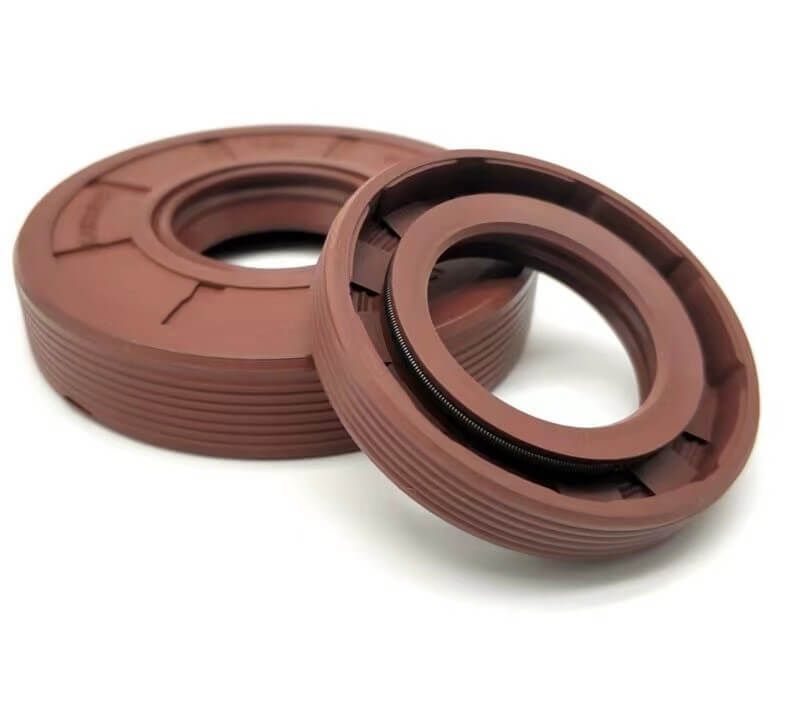
Rubber seals are essential in many industries, ensuring tight and secure connections to prevent leaks and maintain efficiency. However, these seals can fail for various reasons, leading to operational issues and potential safety hazards. This article will delve into the most common causes of rubber seal failures, shedding light on why they occur and how to prevent them.
Rubber seals are crucial in various industries, ensuring tight seals and preventing leaks. However, they can fail due to several factors, leading to operational disruptions. Let's explore these reasons in detail.

O-rings: These are circular rubber seals with a round cross-section. They are commonly used in static and dynamic applications to create a seal between two mating surfaces, such as pipes, cylinders, and hydraulic systems.
Gaskets: Gaskets are flat seals that prevent leaks between stationary parts, like flanges or covers. They come in various materials and designs to suit different pressure and temperature requirements.
Lip Seals: Also known as oil or radial shaft seals, these seals prevent lubricants from leaking out of rotating shafts or bearings. Their lip contacts the shaft surface, creating a barrier against fluids.
Extreme Temperatures: Rubber seals can be affected by both high and low temperatures. High temperatures can cause the rubber to soften or degrade, while low temperatures can make it brittle and prone to cracking.
UV Radiation: Prolonged exposure to ultraviolet (UV) radiation can degrade rubber materials, reducing elasticity and seal performance. Outdoor equipment or seals exposed to sunlight are particularly susceptible.
Humidity and Moisture: Moisture can penetrate rubber seals, swelling or corroding internal components. High-humidity environments can also promote mold or fungal growth, affecting seal integrity.
Over-Tightening: Excessive force when tightening bolts or fasteners can compress rubber seals beyond their designed limits, causing deformation or damage that compromises sealing effectiveness.
Lack of Lubrication: Using appropriate lubricants during installation can increase surface friction, leading to premature wear and tear on rubber seals.
Incorrect Alignment: Misalignment of components can put uneven pressure on seals, leading to leaks or uneven wear patterns that reduce seal lifespan.
Aging: Rubber naturally degrades over time due to environmental exposure, leading to a loss of elasticity, cracking, or hardening, which can impair sealing capabilities.
Oxidation: Exposure to oxygen in the air can cause rubber molecules to break down, deteriorating their physical properties and reducing seal performance.
Abrasion: Continuous friction or contact with abrasive materials can wear down rubber seals, leading to thinning or weakening of the sealing surface.
Incompatible Chemicals: Contact with chemicals that react adversely with rubber, such as acids, solvents, or petroleum-based products, can cause swelling, softening, or degradation of rubber seals.
Fluid Compatibility: Different fluids (like oils, fuels, or hydraulic fluids) may have varying effects on rubber seals based on their composition and properties. It's crucial to use seals compatible with the intended fluid.
High Temperatures: Excessive heat can accelerate the aging process of rubber seals, causing them to harden, lose flexibility, or develop cracks that compromise sealing integrity.
Low Temperatures: Extreme cold can make rubber seals stiff and less pliable, increasing the risk of leaks or seal failure, especially in critical applications like automotive or aerospace.
Pressure: High pressure from fluid systems or mechanical loads can compress rubber seals, affecting their ability to maintain a tight seal over time. Proper seal design and material selection are crucial for withstanding pressure.
Vibration: Vibrations from machinery or equipment can cause rubber seals to move or shift, leading to wear at contact points and potential seal failure if not adequately addressed.
Friction: Excessive friction between mating surfaces can wear down rubber seals, leading to abrasions, tears, or deformation, compromising sealing effectiveness.
Inspection Frequency: Regular visual inspections and performance checks can help detect early signs of seal wear, damage, or degradation before they escalate into significant issues.
Replacement Schedule: Following manufacturer-recommended replacement intervals ensures that worn-out or compromised seals are replaced promptly, maintaining system reliability and preventing unexpected failures.
Cleaning and Lubrication: Proper component cleaning and applying suitable lubricants can extend seal life by reducing friction and preventing contaminants from damaging seals.
Understanding the common reasons behind rubber seal failures is crucial for industries that rely on these components. Businesses can enhance equipment reliability and minimize downtime by addressing these factors and implementing preventive measures.
What are the signs of a failing rubber seal?
Signs include leaks, reduced sealing effectiveness, visible damage such as cracks or tears, and increased friction or resistance during operation.
How often should rubber seals be inspected?
They should be checked during regular maintenance or when equipment undergoes significant operating condition changes.
Can rubber seals be reused after removal?
Reuse depends on the seal's condition. Inspect for damage or wear before reusing, and always follow manufacturer recommendations.
Are there alternatives to rubber seals?
Yes, options like silicone seals or synthetic elastomers may be suitable depending on the application's requirements and environmental conditions.
How long do rubber seals typically last?
The lifespan varies based on material quality, operating conditions, and maintenance practices. Properly maintained seals can last several years.
Users can better understand rubber seal maintenance and troubleshooting by addressing these FAQs.
This comprehensive guide aims to educate the general public about the importance of rubber seals, common failure causes, and preventive measures to ensure optimal performance and longevity.